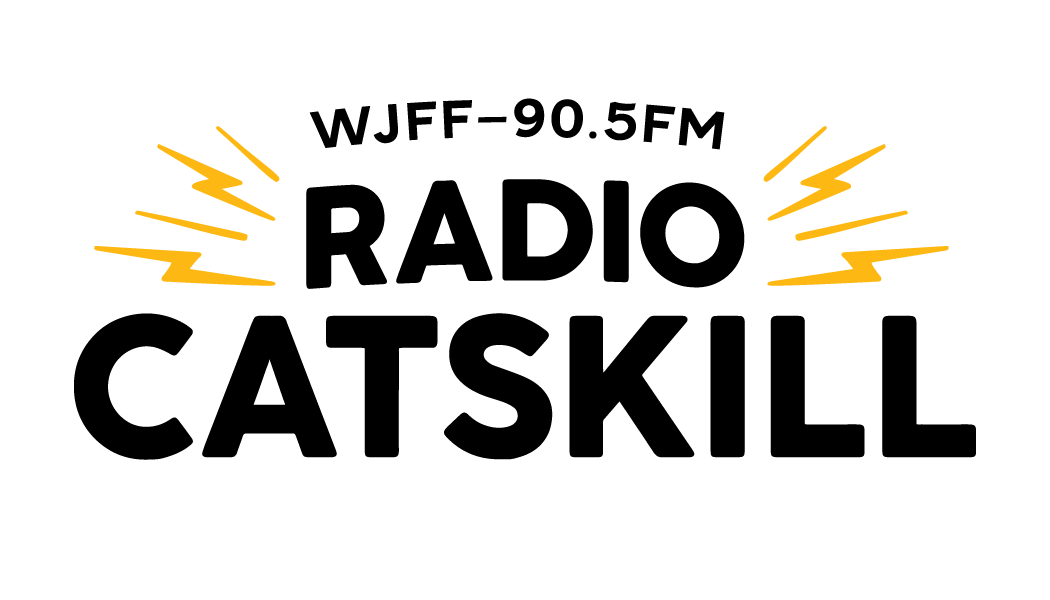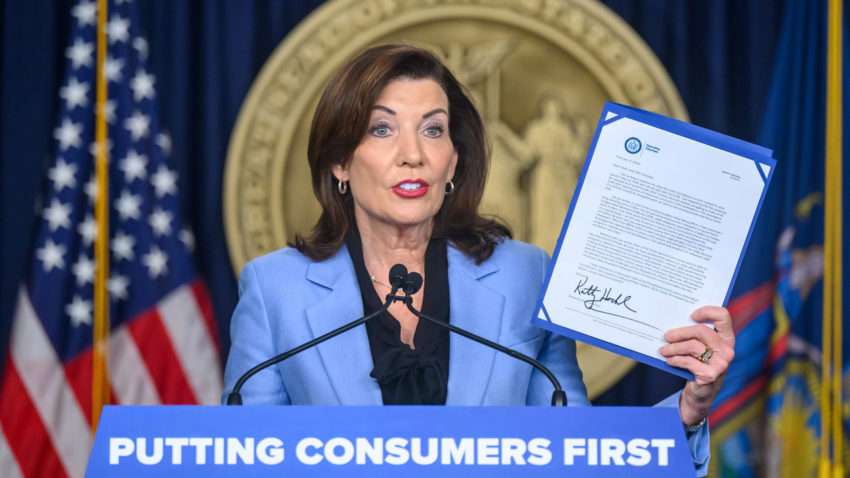NYSERDA is making steep cuts to Empower+, slashing the program’s budget from roughly \$220 million this year to just \$80 million by 2027 — a drop of more than two-thirds.
Since its establishment in 2023, Empower+ has become central to state efforts to increase energy affordability for low-income families in New York and shift towards clean energy. The program helps low- and moderate-income renters and homeowners pinpoint where exactly energy is being wasted in their homes in a no-cost assessment and improve energy efficiency by providing funding for installing insulation, air sealing and heat pumps.
The cuts have come as a shock to many advocates as participation in the program had only been growing — by an average of 27% every year. From 30,000 units of production a year, Eric Walker, Energy Justice Senior Policy Manager for the environmental organization WE ACT for Environmental Justice, said in an interview with Radio Catskill that the new budget will take down production to 10-11,000 units despite record high demand for these programs.
“For the last few years, the state has been actively encouraging contractors to ramp up both their operations and their staffs to support expanded participation in the program because of these additional resources that either come from the state budget or come from ratepayer dollars to support energy efficiency and overall [pursue] the state’s climate goals,” Walker explained. “So it did kind of come as a shock that the state would have essentially held this funding crisis under the mattress until very recently, and then contractors are kind of guessing how to pull the brake, how to pivot, how to adjust. And households are in an increasing backlog of projects where they’re not being served, and then they’re kind of spun around until resources can be found to help get them through the pipe.”
Empower+ is particularly important because it operates on the state-level and is therefore less subject to the current volatility of the federal government, Walker explained. These state budget cuts follow the Trump administration targeting another essential program that has helped decrease energy bills for low-income New Yorkers — the Low Income Home Energy Assistance Program (LIHEAP). Back in April, Trump had fired the entire federal staff for the program, and states have since faced delays in receiving the entirety of their LIHEAP funding. This is despite the fact that New York has seen an increase in LIHEAP applicants from 2024 — with LIHEAP supporting nearly 1.5 million households as of January 2025 — alongside increasing enrollment in Empower+ amid high energy costs.
Last week, assemblymembers, advocates and contractors had rallied outside the Capitol before the NYSERDA’s Low-to-Moderate-Income Upstate Stakeholder Conference to call on the state agency to continue fully funding Empower+ as they drafted their Low-to Moderate-Income Energy Efficiency and Building Electrification Implementation Plan for 2026-2030. Advocates have criticized Governor Kathy Hochul specifically for her “misguided move” to scale back the program despite her outspoken commitment for energy affordability for New Yorkers throughout her tenure.
In the same week as the conference, participating contractors were notified that they were no longer able to submit applications for Empower+ on behalf of new customers. Local contractors drive the operations of Empower+ — conducting audits on homes and filing applications to NYSERDA for energy efficiency upgrades. But now contracting companies are facing the possibility of having to lay off staff or shut down completely, according to New York Focus, even as enrollees are already experiencing a backlog of about 1,600 projects that need to be approved.
“[Contractors] are in the process of trying to understand what the funding implication means, but because of that increasing backlog and throttling of the program, they’re seeing less work for auditors who do the preliminary scoping work within these homes,” Walker said. “The trickle down there is that less audits lead to less work that can be put into a production queue and less work that can be approved, which means less workers on the job and that ultimately leads to staff layoffs. And so several of the contractors that participated in our press events were clear about needing to at least lay off some of their staff temporarily.”
What it means for participants of the program is an exacerbation of the existing burdens that low-income communities and communities of color have historically had to carry when it comes to the cost and quality of their energy. Over 1.2 million families in New York are two or more months behind on paying their electric bills as of this year, amounting to nearly $2 billion in energy debt.
“Energy efficiency isn’t just a racial justice issue, an environmental justice issue, or an economic justice issue — it’s an economic development issue,” Walker explained. “When we put resources into buildings, we are investing in the infrastructure that makes places worth living in, that makes places whole and creates community infrastructure because our homes are the places where we live and spend a lot of our time with our family, our friends and others in our community […] We know that energy efficiency is the cheapest and most effective way to lower bills permanently for the long term and to put people on a pathway to getting on a clean energy transition. When you get insulation or energy efficiency measures put into your building, you see the value proposition almost immediately, and it makes it easier for you to understand how that journey to electrification, whether it’s changing out domestic hot water heaters, changing out fossil fuel clothes dryers, or changing out fossil fuel cooking equipment gets you to a cleaner, safer environment.”
Due to the reverberating effects of racist practices such as redlining, which marked Black and brown communities as too risky for financial investment in their infrastructure, communities of color have disproportionately faced weak electrical service, high energy bills and the health risks associated with fossil fuel emissions. Even as these communities stand to benefit the most from affordable, energy efficient upgrades to their homes, these upgrades will become more inaccessible under these cuts — begging the question of who is being left behind as the state works to shift towards renewable energy in an effort to combat climate change.
Although New York was able to recently pass the all-electric building code, which requires all newly constructed buildings to be fully electric, the state continues to fall behind in meeting their climate goals as set by the Climate Leadership and Community Protection Act (CLCPA) — which works to significantly reduce the state’s greenhouse gas emissions. By this year, New York should have eliminated about a tenth of on-site energy use in buildings, but the cuts to Empower+ are likely to further delay progress in this direction as the state stands at a crossroads between committing themselves to climate action or capitulating to the status quo, Walker argued.
“We need to have a hard conversation about what is our commitment to the state’s energy and climate goals,” he said. “We hear a lot of rhetoric from various channels of the state bureaucracy [about] continuing to prioritize the CLCPA […] and now we’re hearing retrenchment from a commitment to the CLCPA. We really need to have a hard conversation about what does it mean to get towards investing in our communities, investing in our buildings, and investing in the people who live in those buildings and live in those communities because, again, I think of these climate investments as economic development infrastructure and economic infrastructure investments as opposed to simply reducing emissions. That’s a side benefit of the billions of dollars that we need to put forward into buildings and more broadly into our clean energy system.”
To fill in the large gap created by these cuts, Empower+ advocates are looking towards alternative sources of funding. Empower+ as it currently stands already receives funding from a myriad of sources where potential funding can hopefully be extracted, Walker described. This includes but is not limited to the state budget, utility bills, the East coast cap and trade program Regional Greenhouse Gas Initiative and LIHEAP.
“The budget for sure is one where, if we look through the couch cushions, we found resources for Empower+ in the past,” Walker described. “The state had earmarked a couple years ago $200 million for Empower+ to keep the program running, and so we’re looking for Governor Hochul and the state energy leadership, especially the folks at NYSERDA, to begin identifying those flexible resources. And the second one, outside of the state budget, is a regional greenhouse gas initiative. The Regional Greenhouse Gas Initiative is the power sectors’ essential cap and trade program right now and that puts literally hundreds of millions of dollars in state coffers every year that can be easily diverted towards sustaining the program at current production levels.”
Image: Governor Kathy Hochul holds her letter to Public Service Commission Chair and Department of Public Service CEO Rory Christian to reject Con Edison’s proposed rate hike on February 11, 2025 as part of her stated commitment to energy affordability. (Photo credit: Susan Watts/Office of Governor Kathy Hochul)

